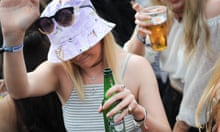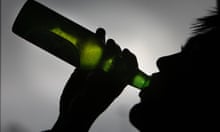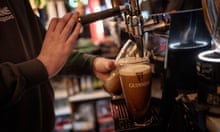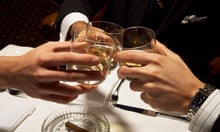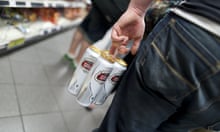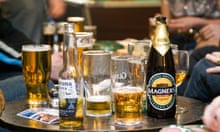If you thought beauty was in the eye of the beer holder, think again. Scientists have poured cold water – or rather, vodka – on the existence of “beer goggles”: the idea that alcohol makes other people appear better looking. However, it may arm you with the “liquid courage” to approach attractive people, the research suggests.
The term “beer goggles” is said to have been coined by male North American university students in the 1980s. Yet despite anecdotal evidence for the phenomenon, the link between alcohol intoxication and physical attraction has not been systematically studied.
Previous research, which has typically involved asking people to rate other people’s attractiveness by assessing photos when sober and intoxicated, has produced mixed results. Taken together, these studies indicated that if the beer goggles effect did exist, its magnitude was small, said Prof Molly Bowdring at the Stanford Prevention Research Center in Palo Alto, California, who led the latest research.
The new study added an additional dimension: the possibility of actually meeting some of the people participants had previously rated.
“By making participants believe that the pictures they were viewing were of people they could choose to interact with in the future, the research team have added a nice element of realism, which has been missing from previous research in this area,” said Rebecca Monk, a professor of psychology at Edge Hill University in Ormskirk, Lancashire, who was not involved in the study. “Their paradigm also allows for an exploration of the liquid courage adage rather than solely the so-called beer goggles phenomenon.”
Bowdring and Prof Michael Sayette of the University of Pittsburgh invited 18 pairs of male friends into the laboratory to rate the attractiveness of men and women they viewed in photos and videos. The reasons for inviting friend pairs was to try to mimic the social interactions that might typically occur in a real drinking situation.
On one occasion, both men were given enough vodka and cranberry juice to raise their blood alcohol concentration to about 0.08% – the legal limit for driving in England, Wales and Northern Ireland and many US states – and on the other occasion, they both received a non-alcoholic beverage.
After providing attractiveness ratings for the photos, they were asked to select which of these individuals they would most like to interact with in a future experiment.
The research, published in the Journal of Studies on Alcohol and Drugs, did not find that alcohol increased people’s perceptions of others’ attractiveness. “But we did find that people were more likely to select to interact with the people they perceived to be most attractive after consuming alcohol,” Bowdring said.
Indeed, drunk participants were 1.71 times more likely to select one of their top four attractive candidates to potentially meet in a future study, compared with when they were sober.
“Their findings essentially suggest that while intoxication may not have resulted in beer goggles, it did seem to increase liquid courage, in that people were more likely to indicate a desire to interact with attractive others,” said Monk, whose previous research had found some evidence to support the beer goggles effect.
In this study, UK undergraduates were asked to perform a computer-based task while ignoring photos of attractive and unattractive faces. It found that while sober participants were more distracted by attractive faces, those who were “lightly intoxicated” were equally distracted by attractive and less attractive faces.
Monk added that different methodological approaches may explain some of these mixed findings; to move on, the field needs larger studies to see if they can be replicated.
Given alcohol’s effects on visual processing and cognitive function, it was also possible that the results would change at heightened levels of intoxication, Monk said.
Assuming alcohol does enhance the likelihood of a person interacting with someone they find attractive, Bowdring believes her findings could reveal one process underpinning the rewarding yet potentially hazardous nature of alcohol – including its impact on risky sexual behaviour.
“If you’re going to consume alcohol, I think it is worth reflecting on how can you do it in a way that’s safe and consistent with your goals,” she said. “People may benefit by recognising that valued social motivations and intentions change when drinking, in ways that may be appealing in the short term but possibly harmful in the long term.”

